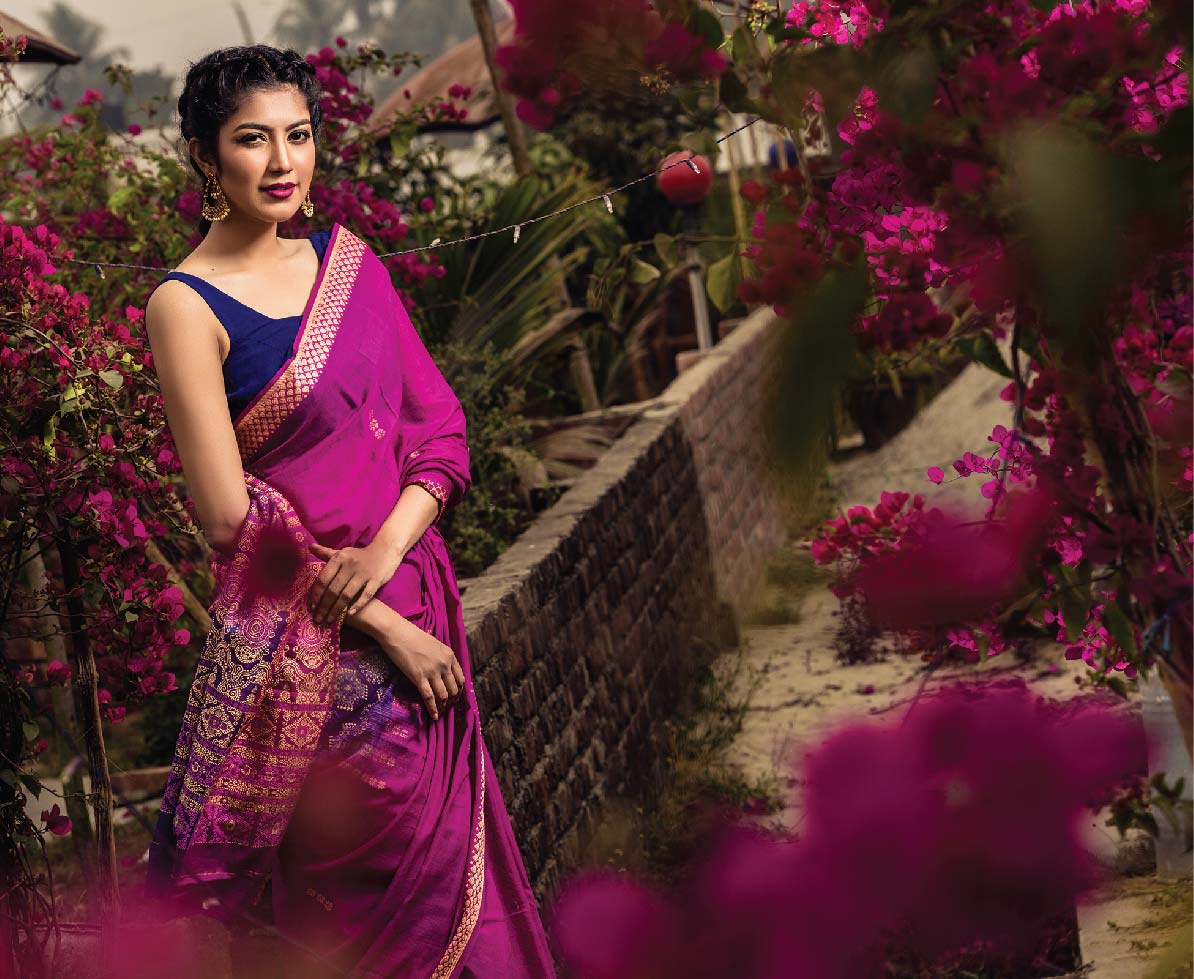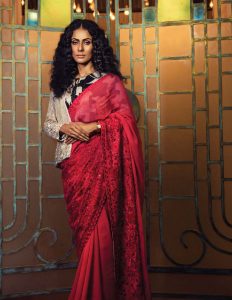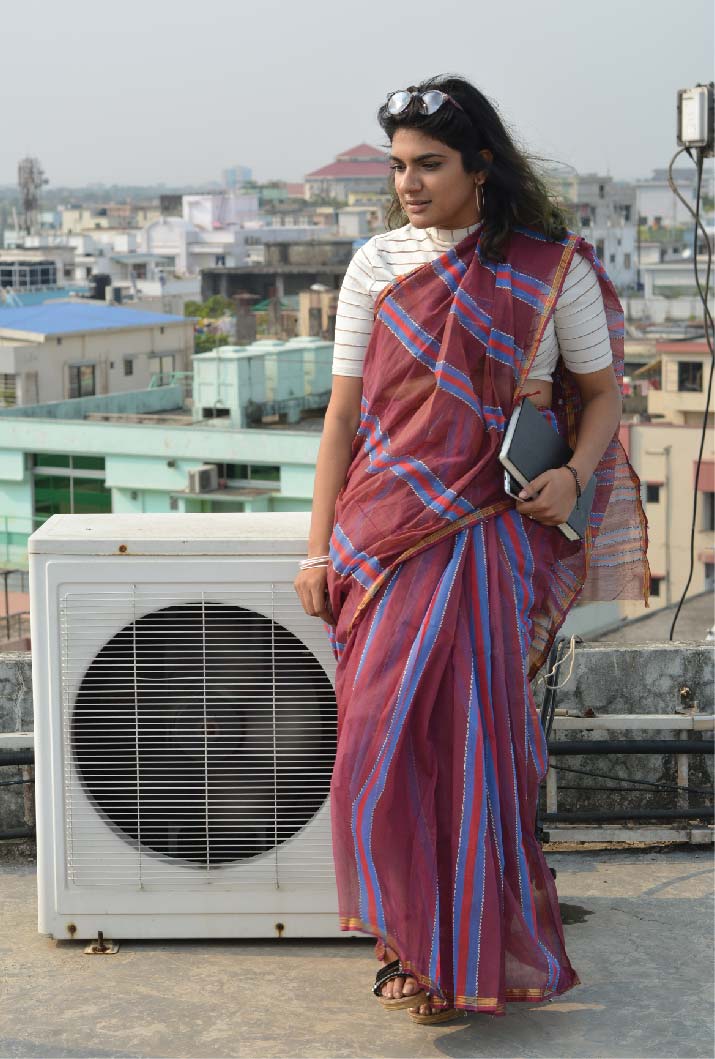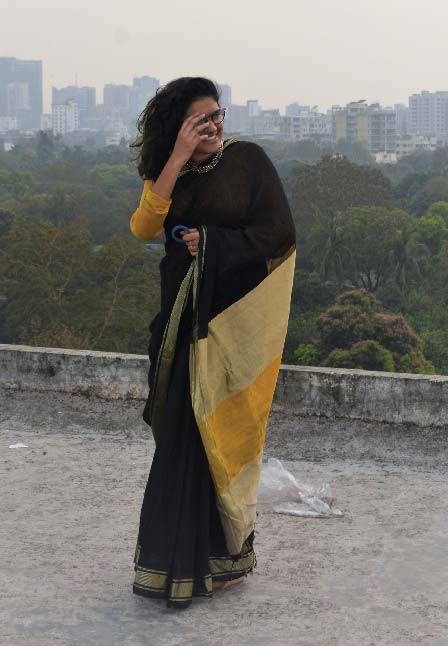For the deshi dames, saree has for long been a wardrobe staple. While some wear it daily, others choose to wear it on special occasions. The arrival of Pahela Baikshakh makes this dress a little closer to the heart. In the spirit of the occasion we look at the different facets of the saree.
Draped with Love

When we look through the pages of history, we will find women winning battles and wars, all the while draped in sarees. Take Rani Laxmibai for instance. In a battle, the queen of Jhansi tied the saree close to her body, in a Maharashtrian style called the Nauvari sari. Hair tied with a scarf around her head, she fought invaders with a  spirit of a warrior.
spirit of a warrior.
Women can now accomplish anything. From multitasking between work and home to fighting major battles and conquering the world, women have come onto their own and have revived the saree as more than just a garment to cover oneself.
The fashion of sarees date back to the 2800-1800 B.C.E and with the changing times, the way we drape and feel about this six yards of beauty has evolved a great deal. Its fascinating to imagine how a simple strip of unstitched cloth has now become both a necessity and a style statement throughout the world.
Back in the day, sarees used to be woven in plain cotton or silk, worn by ordinary women.
The upper class women could afford what was a finely woven diaphanous silk sarees that could be easily slipped through a finger ring according to folklores.
“In Bangladesh, weavers use Egyptian cotton to craft Jamdani sarees and this has given birth to the old fashioned jala loom. Although saree is not considered to be everyday wear in Bangladesh, we find ourselves drawn to this garment for occasions such as Pohela Baishakh and Independence day.”
As for embellishments, some sarees would boast of checks, stripes and block printing with vegetable dye or tie-dyeing. Draped in twist and turns, the final outlook may have looked simple; however, it took hours of effort and skills to carve the illustrative motifs and ornaments on the material itself. As for the trend for gold and silver threadwork, commonly known as zari work, came into play, brides even today are inclined to choose zari embellished sarees for their big day.
Speaking of weddings, Dhakai Benarosi saree prevails as one of the most popular choices for brides, preferred in pure red. The style is mostly known for its intricate and yet exquisite gold and silver brocade or zari, fine silk and rich embroidery. The motifs on this are inspired by the Mughal era.
In Bangladesh, weavers use Egyptian cotton to craft Jamdani sarees and this has given birth to the old fashioned jala loom. Although saree is not considered to be everyday wear in Bangladesh, we find ourselves drawn to this garment for occasions such as Pohela Baishakh and Independence day.
From the simple traditional cotton saree to embroidered designer saree gowns, this yard of material now encompasses both luxury and simplicity, aspiring to women from all walks of life.
Styling a saree for the office
By Heeva Raza Chowdhury
Even though I’m British by birth, my parent’s heritage has always fascinated me. Being a Londoner, South-Asian fashion naturally, seemed to be a perfect depiction of a merger between the two. To me, fashion has always been an art, those extra brush strokes to the human body that takes you from being a picture to a Picasso. And now that I’ve moved to Bangladesh, there’s no ohbab of them for me to play with.
I adore sarees. The national dress, 6 yards worth of silk, cotton and sophisticated drapes on hundreds of arms here and is versatile enough for the beggars and the beauties.
The versatility of it was what originally had me thinking; could I, a younger modern day working woman, born and bred in the west be able to wear a saree during the average working week? Plus have a look at my go to tips for office wear, be that for sarees or suits.
Day 1
I began the week pretty excited, optimistic and well, delusional. Having to maintaining a work week I decided to begin my week with a cotton purple striped saree with cotton stitch work, (Mirpur 11 Market, Tk 300, yup Tk 300!) with a white high neck crop top (Risky, £5) and silver simple hoops and a silver septum piercing (Both Primark although surprised Bangladesh didn’t have a wider variety of septum piercings as many of our woman don them). Something about pinstripes always gives off the official-looking scent, and teaming it with the high neck gave it the structure that we always crave whien choosing a formal outfit.
“The national dress, 6 yards worth of silk, cotton and sophisticated drapes on hundreds of arms here and is versatile enough for the beggars and the beauties.”
Day 2
One of the major things I wanted to experiment with was trying to add a bit more practicality to the saree, and see if I can wear it without any make-up on. To outsiders, this may seem like well not a big deal, especially as most of my work days (unless I have external meetings) are carried out in this way but I hate the feeling of having to be glamorous when fashionable. So my non-glamorous look consisted of a simple black Manipuri saree (Lamar Bazar, Sylhet Tk 1500) and a georgette yellow blouse (tailor-made). When it comes to office wear, you can never go wrong with the classic shades of black, grey and navy and teaming it up with a dash of colour to bring it a little more alive.
Also with the theme of comfort, I know how it’s virtually impossible for a saree to look nice unless it’s teamed up with heels, but wearing it with wedges allowed me to have the mobility and comfort I needed to be a working queen.
 Day 3
Day 3
This day I dedicated to playtime with my saree! ActionAid Bangladesh teamed up with Bibi Russell to host a beyond inspiring fashion shows for and with some beautiful women who also happened to be Acid attack survivors which I was lucky enough to be invited along to. I absolutely love experimenting with my clothes (at times, with horrid results) and so today was that day! I wore my mother’s geometry style silk saree, draped similar to the Gujarati technique to allow my white office shirt (New Market, Tk 500) to shine through. I also decided to team this look up with white cowboy boots, because I’m me. Never ever fear to experiment, and the best thing about the saree is the fact that they are constantly adaptable. Have fun with it!
Being in a saree did frustrate me a tad, but not because of the clothing itself but the perception they had of being viewed as the clothing of the bhodro Bengali girl. Hopefully over time, the way we choose to portray ourselves will be about us, rather than about the viewpoint of others. In the meantime, I’m still going to be rocking the 6 yards.

